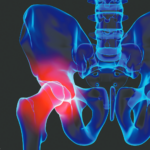This site led me to the British Society for Paediatric and Adolescent Rheumatology website where the following information is dispensed:
“Ideally your child should not drink alcohol while taking methotrexate. This is because methotrexate and alcohol are both metabolised in the liver the two combined puts extra strain on the liver. However, as long as your child is legally old enough to drink alcohol an occasional glass of wine or beer is unlikely to be harmful. Excessive regular alcohol and binge drinking should be avoided.”2
On the other hand, the ACR guidelines state:
“Alcohol significantly increases the risk for liver damage while taking methotrexate, so alcohol should be avoided while on this medication.”3
Frankly, I was surprised by these liberal British interpretations of how much alcohol a patient can safely imbibe. You can do the math; five days of alcohol consumption per week is allowed with up to four drinks consumed per day. Twenty drinks per week! An informal survey of my own division members found a wide-ranging set of opinions regarding the definition of the word “avoided” in the ACR guidelines. Does it imply a total abstinence from alcohol or just cutting back a “wee bit?” A rheumatologist from New York whom I once met on at panel discussion of this subject once defined “appropriate” consumption as being equal to one less drink that his own daily alcohol intake. If his consumption on that particular evening was any indication, his patients had nothing to be concerned with!
The Spa Treatment
Getting back to the British guidelines, I began to wonder about other ways that American practice styles might differ from those of our European colleagues. I needed to look no further than how we treat osteoarthritis, a condition with a limited set of options available to American practitioners. Pain relievers, exercise, shoe inserts, and, when all else fails, surgery. I envy our European colleagues. They seem to have a wider array of interesting options to offer their long-suffering patients. I learned about the European way of managing musculoskeletal pain through my experiences with another patient, Madame D. She was a lovely, French-speaking, middle-aged Swiss national whom I treated for generalized osteoarthritis. In the first few years of our relationship, I offered her every new nonsteroidal antiinflammatory drug (NSAID) that came on the market. They all seemed to provide her with some time-limited benefit.
However, Mme. D had better ideas about dealing with her joint pain. We developed this yearly ritual where she would ask me to write a letter on her behalf to the Swiss Consulate requesting medical coverage for spa therapy. Apparently, her spouse, long deceased, had worked in Consular Affairs and this was one of the perks of the job. Off she went; one summer to Gstaad, another to St. Moritz, and to many other magnificent Swiss resorts renowned for their charming surroundings, sulfurated sparkling waters, medicinal mineral baths, and mud. She would return to Boston feeling fresh and invigorated, at least for a couple of months before the benefits wore off.
